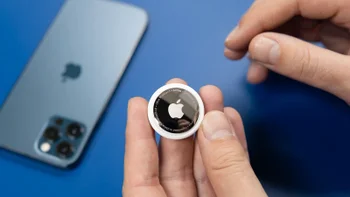TSMC talks about the challenges in supersizing chip wafers

Most of the time when we discuss changes in chip manufacturing our interest is in shrinking things. After all, making the transistors on our microchips smaller means faster processing that uses less energy. In the world of mobile technology, it’s very hard to dislike those two qualities. But there’s another race going on: to super-size the wafers that chips are made on.
For those of you who have never seen how a computer chip is made, they start out their lives as round silicon “wafers.” The chips are etched into the wafer, with all of the square(ish) chips laid out in rows, and at the end of the process the wafers are cut into individual chips. As a result, the larger the wafer is, the more chips can be made with one pass through the manufacturing process, while also generating proportionately less wasted space per chip (the wasted space is the parts of the round edges of the wafer that are left blank because a square chip won't fit). As with other electronics, being able to make more things with less waste brings down the cost – so obviously bigger wafers are a good thing.
Intel is also making an aggressive push into 450mm wafer production, indicating that it will spend a similar amount (quoted to be $8 billion) to expand two of its U.S. manufacturing facilities to accommodate upsized chip production. TSMC Chairman Morris Chang told reporters that he thinks Samsung is also working hard to get ready for 450mm wafers.
How soon are we likely to see chipsets in our phones and tablets that utilize 450mm wafers? Maybe not for a while; at TSMC’s annual meeting Chang indicated that “the technology is not ready yet”, and he refused to be pinned down to a specific timeline as to when full scale manufacturing might start on the larger wafers. Chang did indicate that he expected technical difficulties that stem from working with 450mm wafers to last for the next half decade.
Unless Samsung, Intel, or someone else gets there first, don’t look for an immediate drop in the price of your favorite mobile devices (at least due to chip prices). But the long term outlook is rosy, and we should see ever more advanced chips that actually cost less than current chips do. At least by sometime in 2018.
source: Reuters
Unfortunately, it’s no small challenge to move up from the current 300mm wafers to 450mm wafers (for the metrically-challenged, that’s 18 inches). TSMC is one of the companies trying to tackle the problem head on, having just secured permission from the Taiwan government to build a new plant to produce the new biggie wafers at a projected cost of $8-10 billion dollars.
Intel is also making an aggressive push into 450mm wafer production, indicating that it will spend a similar amount (quoted to be $8 billion) to expand two of its U.S. manufacturing facilities to accommodate upsized chip production. TSMC Chairman Morris Chang told reporters that he thinks Samsung is also working hard to get ready for 450mm wafers.
source: Reuters














Things that are NOT allowed: